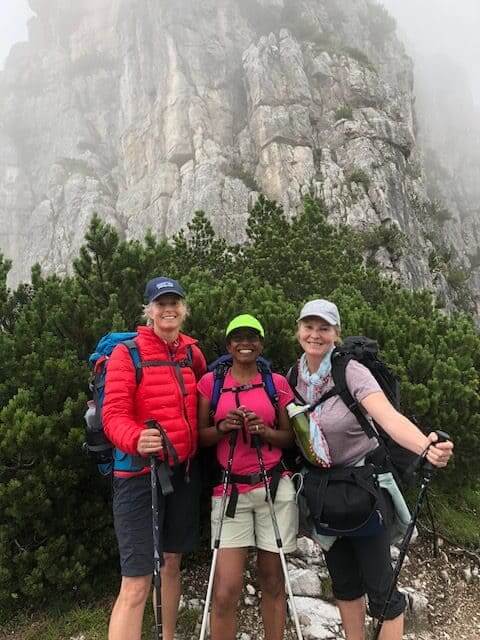While resting at a beautiful hut perched high in the Dolomite Mountains, Reka and I shared a table with an older Italian couple that spoke no English and a German mom (about our age) with her 30-year-old deaf daughter. I know a handful (no pun intended) of American Sign Language from my sister, who teaches it, but I didn’t realize that sign language isn’t universal and actually differs based on the country of origin. So, Reka and I spoke a bit with the German mom. The daughter was just plain hungry and the older Italians seemed slightly irritated. Although Reka can get by speaking several languages and I manage to converse in Spanish and know a few niceties in other languages, this dinner conversation was going down in flames. Fast.
That was when I remembered purchasing a cheap translation app and that this particular hut had Wi-Fi access. The app allows a user to speak into the phone and it transcribes, translates, and speaks the message in the desired language. Or, if the individual is deaf and/or has impaired speech, they can simply type and the app will translate and speak in the selected language. I excused myself from the table to retrieve my phone.
When I returned, I pulled out my phone…and received an eye roll from the old Italian guy. I spoke into the phone, the app processed my words, and the mechanical voice asked him in Italian where they had hiked from and where they were going tomorrow. Both the husband and wife lit up – and our conversation began. Next, I wanted to engage with the daughter and give her mother a break from translating. I made the adjustments in the app and we were able to talk and include her in our conversations. Occasionally, the internet was slow or the app would get the translation completely wrong, but that provided us an opportunity to laugh with each other. The only real challenge here was that my phone spellchecks in English, and when the daughter typed in German, she’d become a little frustrated with the spellcheck. Minor, really. We ended up talking for so long that we were the last table to head for the dorms. The following morning, we all shared smiles and greetings with each other before embarking on the day’s hike.
This reminds me that as the leader of your team, if you see people who aren’t engaged, perhaps you aren’t speaking the same language. Speak the language of inclusion. Getting everyone involved and participating is one of the key obligations we have a leaders. Be proactive by reaching out to individuals who seem less engaged, communicative, or present – this simple gesture on your part could have lasting and positive effects on your company’s overall success.
Would you like to learn more about inclusion? Are you looking to elevate the engagement level of your team? That’s what we’re here to do! Contact us today.




